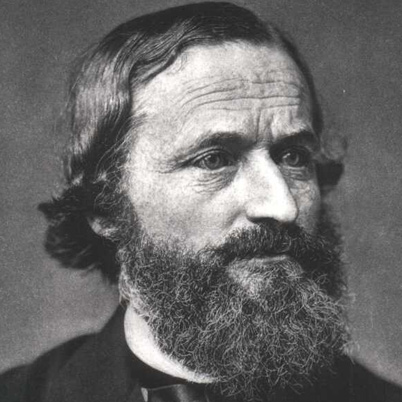Gustav Robert Kirchhoff

Gustav Robert Kirchhoff was born to Friedrich
Kirchhoff and Johanna Wittke on March 12th, 1824 in
Konigberg, Prussia. He was born into a rising
intellectual family and graduated from the
University of Konigberg in 1847. He married
Clara Richelot and moved to Berlin, Germany where we
worked at Breslau. While Kirchhoff was still
in school he formulated the general ideas for his
circuit laws, which later became the subject for his
doctoral dissertation, and continued his work at
Breslau. 
In 1854, Kirchhoff was invited to the University of
Heidelberg to work with Robert Bunsen on
spectroscopy. While they worked together they
not only discovered their three laws of spectroscopy
they discovered rubidium and cesium. During
the 1860s, Kirchhoff taught a mathematicophysical
seminar course at Heidelberg.
In his later career, Kirchhoff received many
awards, one of which was the Rumford Medal for his
work on the solar spectrum and the inversion of
bright lines in the spectra of artificial
light. In 1875, Kirchhoff was given the first
chair ever dedicated to to theoretical physics in
Berlin.
Kirchhoff not only created three laws of
spectroscopy but he also created a law of
thermal radiation, two rules of circuits, and a
number of equations and formulas.
In 1887, Kirchhoff died and was buried in St.
Matthaus Kirchhoff Cemetery in Schoenberg.
Image
courtesy of:
http://www.google.com/imgres?um=1&hl=en&client=firefox-a&sa=N&pwst=1&rls=org.mozilla:en-US:official&channel=np&biw=1238&bih=666&authuser=0&tbm=isch&tbnid=y7mWBQbacmAoBM:&imgrefurl=http://www.biography.com/people/gustav-kirchhoff-9365676&docid=d0cvYJ__8xM1yM&imgurl=http://www.biography.com/imported/images/Biography/Images/Profiles/K/Gustav-Robert-Kirchhoff-9365676-1-402.jpg&w=402&h=402&ei=SRZ5T9UZg6eJApHzmKcO&zoom=1&iact=hc&vpx=118&vpy=309&dur=160&hovh=224&hovw=224&tx=101&ty=113&sig=101024418444008772543&page=1&tbnh=135&tbnw=139&start=0&ndsp=23&ved=1t:429,r:8,s:0